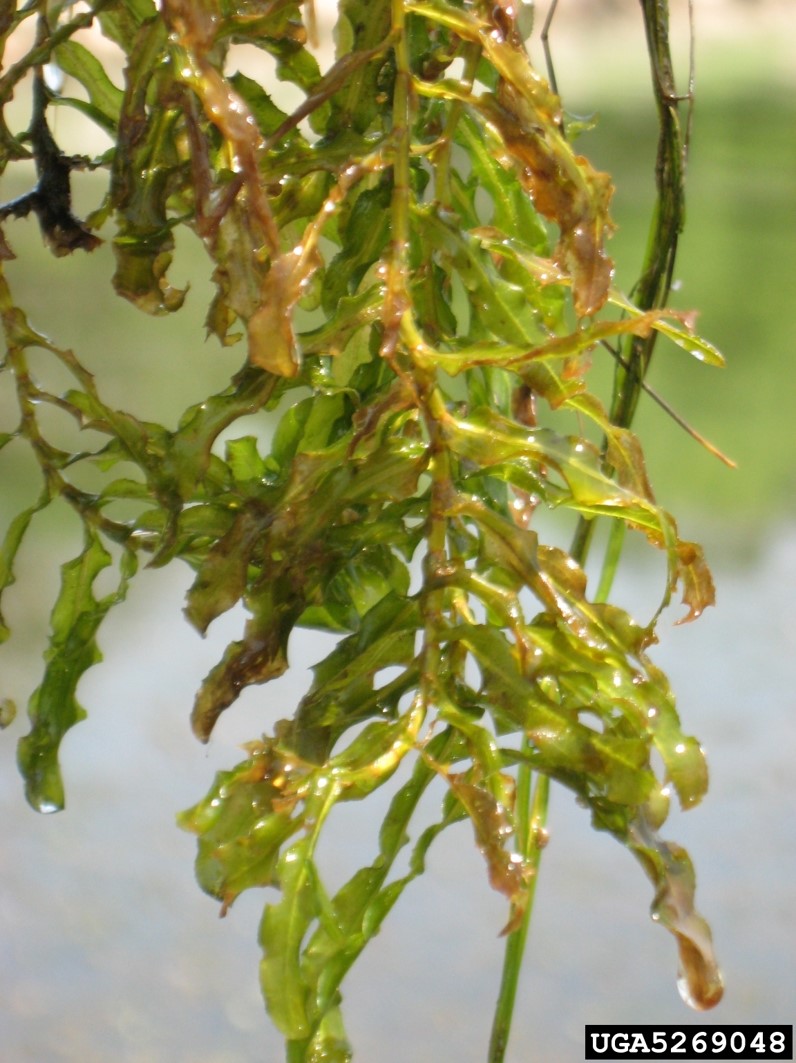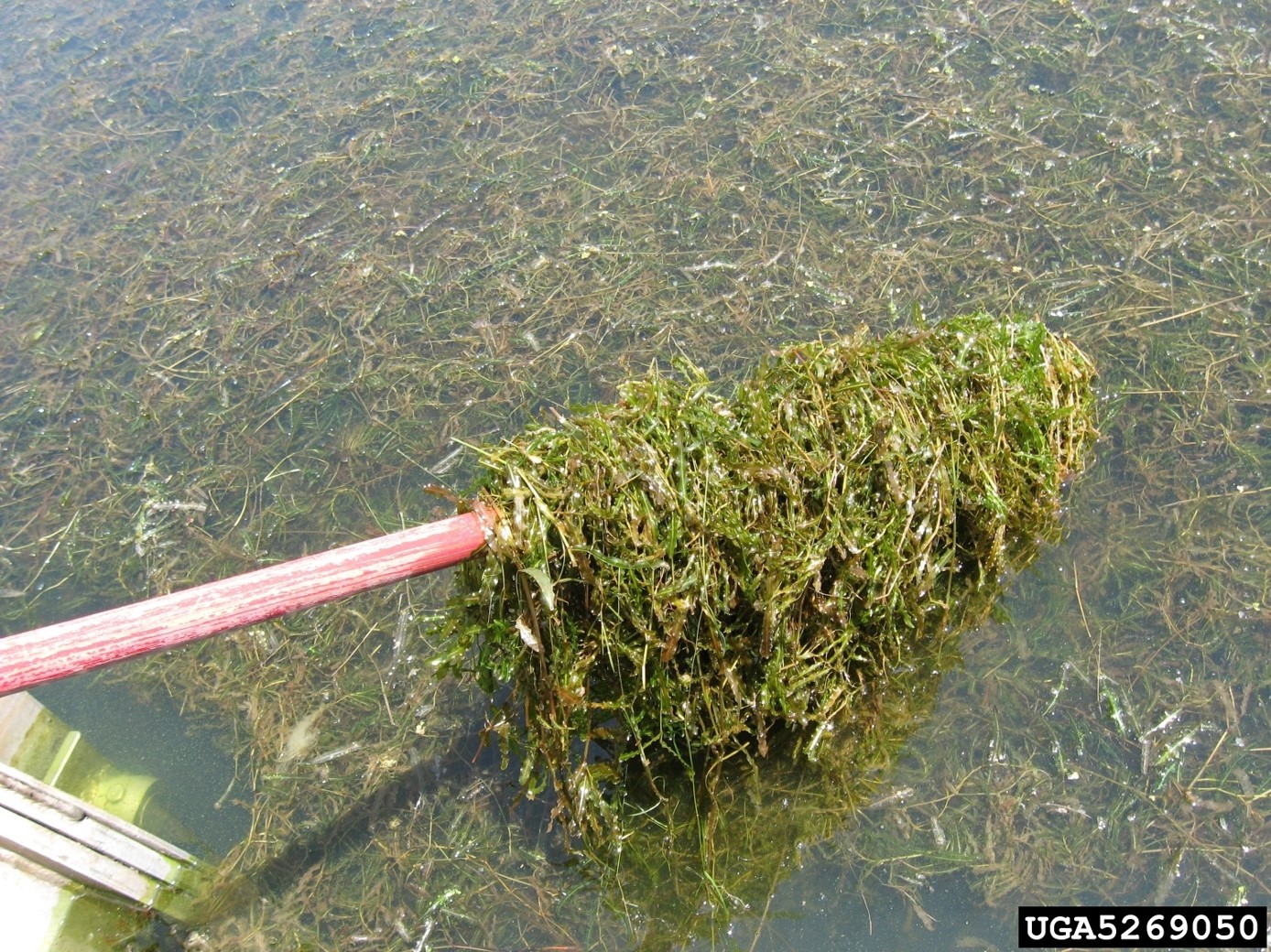CURLY-LEAF PONDWEED
Potamogeton crispus
DESCRIPTION
Submerged, perennial, rooted aquatic plant; green to red brown in color; leaf edges are wavy, flowers between May and June that are red-brown in color. Learn more here.
HABITAT
Freshwater lakes, rivers, streams, ponds, ditches, and canals, but also brackish waters. Rooted in silt or clay and sometimes sand and gravel.
LOCATION IN NEBRASKA
Large, dense colonies in some small lakes and ponds. Most concentrated in the east portion of the state, but widely scattered.
PATHWAY OF INTRODUCTION AND SPREAD
Curly-leaf pondweed is native to Eurasia, Africa, and Australia. It was likely introduced when common carp were intentionally introduced into Midwest waters as a game fish in the 1880s Source. The plant can spread between waters via plant material such as plant fragments or fruit that are transported with boats, trailers, waterfowl hunters or other aquatic equipment.
IMPACTS
Forms dense stands over very large areas, crowding out other species, restricting water movement, and altering oxygen levels which impacts fish. Can impact water recreational activities when colonies restrict access to docks, fishing areas, and piles of dying curly-leaf pondweed cover shorelines.
Chris Evans, Illinois Wildlife Action Plan, Bugwood.org
Leslie J. Mehrhoff, University of Connecticut, Bugwood.org
Graves Lovell, Alabama Department of Conservation and Natural Resources, Bugwood.org



